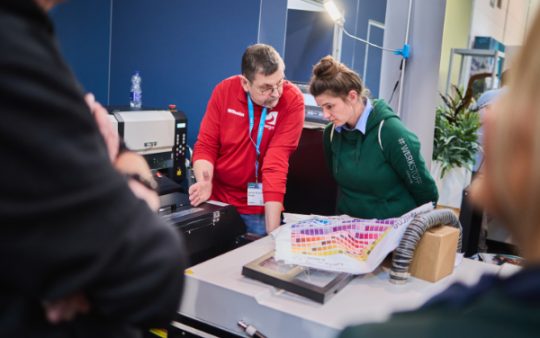Rain jackets as environmental pollutants

Published on 21.05.2020
“Isn’t it ironic that clothing especially designed for people living in close touch with nature, often harms the environment?” Mario Stucki and Anna Beltzung are not willing to put up with this situation. The two young scientists from ETH Zürich and their company dimpora (Link https://dimpora.com) have made it their mission to deliver a sustainable solution for high-performance outdoor wear without harming nature.
Environmentally detrimental substances still in use quite often
Outdoor wear is particularly popular with nature lovers. But many outdoor fans are not aware of how detrimental rain jackets or rain pants can be. Not only for those wearing them. Nature also suffers from the released chemicals that are used to produce wind-breaking and weather-resistant textiles. Especially for manufacturing outdoor membranes fluoride compounds are frequently used. To provide textiles with wind-breaking and water and soil-repellent properties fluorinated polymers are often applied as coatings. When wearing and washing these garments the fluorinated chemistry automatically releases non-degradable toxins and micro plastics. These are not only detrimental to nature – they are also hazardous to human and animal health.
Sustainable membrane for painting on, spraying, printing or dipping
The membranes made by dimpora forego fluoride chemicals. The company predominantly looks to fluorine-free polyurethane, which is also free from the detrimental solvent dimethylformamide (DMF). Garments finished this way are waterproof, breathable, flexible and high-performance. On top of this, dimpora’s special process makes the biodegradation of polymers (micro plastics) possible. Completely bio-degradable or recyclable products are under development.
For 2D products dimpora uses conventional lamination of the membrane onto the garment in production. For 3D products the membrane is applied directly to a finished garment. Textiles can be coated by painting, spraying, printing or by dipping processes. Thanks to this approach the membrane works like a skin on the textiles and its functionality is not impaired by cuts, seams or gluing. The membrane remains fully functional.
This video explains the 3D process and the operating principle of the membrane:
Enjoying nature without regrets
Mario Stucki and Anna Beltzung have a clear mission with dimpora. They want to develop the next generation of functional and sustainable high-performance membranes for outdoor enthusiasts. Users don’t have to compromise and still get a rugged, waterproof and breathable product for their outdoor activities. With textiles that are not only good for people but also for the planet.
Image: dimpora














